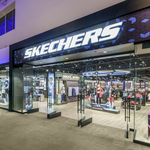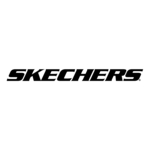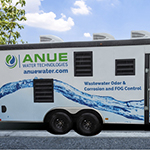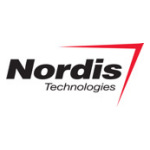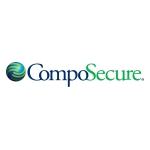In the pivotal Phase 3 TRANSFORM trial, single infusion of Breyanzi significantly outperformed the nearly 30-year standard of care with median event-free survival of 10.1 months vs. 2.3 months and a well-established safety profile
Approval was also based on data from the Phase 2 PILOT study, the first and only company-sponsored study of a CAR T cell therapy in patients with primary refractory or relapsed LBCL who are not considered candidates for transplant, in which Breyanzi delivered deep and durable responses
With this approval, Breyanzi now has the broadest patient eligibility of any CAR T cell therapy in relapsed or refractory LBCL, reinforcing company’s leadership in delivering innovative cancer treatments with Breyanzi as a cornerstone of its diversified cell therapy portfolio and pipeline
PRINCETON, N.J. — (BUSINESS WIRE) — $BMY #Breyanzi—Bristol Myers Squibb (NYSE: BMY) today announced that the U.S. Food and Drug Administration (FDA) has approved Breyanzi® (lisocabtagene maraleucel), a CD19-directed chimeric antigen receptor (CAR) T cell therapy, for the treatment of adult patients with large B-cell lymphoma (LBCL), including diffuse large B-cell lymphoma (DLBCL) not otherwise specified (including DLBCL arising from indolent lymphoma), high-grade B-cell lymphoma, primary mediastinal large B-cell lymphoma, and follicular lymphoma grade 3B, who have:
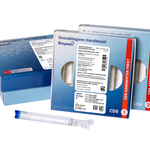
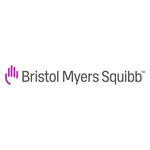
- Refractory disease to first-line chemoimmunotherapy or relapse within 12 months of first-line chemoimmunotherapy; or
- Refractory disease to first-line chemoimmunotherapy or relapse after first-line chemoimmunotherapy and are not eligible for hematopoietic stem cell transplant (HSCT) due to comorbidities or age.
With these two new indications, Breyanzi now has the broadest patient eligibility of any CAR T cell therapy in relapsed or refractory LBCL. Breyanzi is not indicated for the treatment of patients with primary central nervous system lymphoma. Please see the Important Safety Information section below, including Boxed WARNINGS for Breyanzi regarding cytokine release syndrome (CRS) and neurologic toxicities.
Breyanzi has demonstrated clinically meaningful and statistically significant improvements in event-free survival (EFS), complete responses (CR) and progression-free survival (PFS) compared to standard therapy in patients with LBCL that is primary refractory or relapsed within 12 months after first-line therapy. An improvement in EFS represents an increase in the length of time in which patients are alive and without disease progression or in need of further treatment. Breyanzi, a differentiated CAR T cell therapy, is made from a patient’s own T cells, which are collected and genetically reengineered to become CAR T cells that are then delivered via infusion as a one-time treatment. Breyanzi can be administered in the inpatient or outpatient setting at a certified treatment center.
“As part of our commitment to developing innovative cancer treatments for patients with critical unmet need, Breyanzi offers a potentially curative option for more patients,” said Ester Banque, senior vice president & general manager, U.S. Hematology, Bristol Myers Squibb. “Based on the demonstrated clinical benefit, this approval of Breyanzi underscores the significant advances we are making to deliver on the promise of cell therapy.”
LBCL is a difficult-to-treat and aggressive blood cancer, and up to 40% of patients have disease that is refractory to or relapses after initial therapy. Historically, the only potential cure for these patients is the current standard of care consisting of intensive hospital-based salvage immunochemotherapy followed by high-dose chemotherapy and HSCT in those whose disease responds to the salvage therapy. However, half of patients are not considered candidates for a stem cell transplant due to age and/or comorbidities, and only an estimated 25% of those who are candidates are able to receive a stem cell transplant and experience long-term clinical benefit. For patients who are not considered candidates for stem cell transplant, treatment options are limited. If left untreated, relapsed or refractory LBCL has a life expectancy of just three to four months.
“Breyanzi represents a remarkable advance over a nearly 30-year standard of care, providing significantly improved efficacy with a well-established safety profile,” said Manali Kamdar, M.D., lead investigator of the TRANSFORM study and Associate Professor, Clinical Director of Lymphoma Services, Division of Hematology, Hematologic Malignancies and Stem Cell Transplantation, University of Colorado Cancer Center. “This important milestone reinforces the benefit of offering a CAR T cell therapy option to patients earlier in their treatment journey and it’s critical that we begin the work to implement this therapy into standard practice as a second-line treatment in order to help improve outcomes for more patients.”
“Patients with large B-cell lymphoma whose disease does not respond to or relapses after first-line therapy often face lengthy and intensive cycles of chemotherapy with the goal of proceeding to stem cell transplant,” said Lee Greenberger, Ph.D., Chief Scientific Officer of the Leukemia & Lymphoma Society (LLS). “As one of the earliest supporters of CAR T since the 1990’s, LLS is excited to see the FDA approval of a CD19 CAR T cell therapy that has moved from later lines of therapy to a second-line option, which offers patients with relapsed or refractory large B-cell lymphoma the potential for long-term remission and the hope of a cure.”
Breyanzi is the only CAR T cell therapy that has been evaluated in a broad second-line patient population for LBCL in two distinct company-sponsored studies, including in patients whose disease relapsed within or later than 12 months following first-line treatment and regardless of transplant candidacy.
The approval of the expanded indications for Breyanzi is based on results from the pivotal Phase 3 TRANSFORM study in which adults with LBCL that was primary refractory or relapsed within 12 months of front-line therapy were randomized to receive Breyanzi or standard therapy consisting of salvage immunochemotherapy, and if responsive, high-dose chemotherapy and HSCT. The trial included patients with diverse histologic subtypes and high-risk features, and offered a patient-centric design, allowing for bridging immunochemotherapy in the Breyanzi arm for disease control, which reflects real-world clinical practice and allowed for inclusion of patients with more aggressive and fast-progressing disease. Due to the high rate of patients whose disease does not respond to salvage immunochemotherapy, the trial also allowed for crossover from the standard therapy arm to the Breyanzi arm if patients did not derive a response after three cycles of salvage chemotherapy or had disease progression at any time.
Results from the TRANSFORM study showed, Breyanzi (n=92) more than quadrupled median EFS compared to standard therapy (n=92) (10.1 months vs. 2.3 months [HR: 0.34; 95% CI (0.22-0.52) p<0.0001]). The majority of patients achieved a CR with Breyanzi compared to less than half with standard therapy (66% [95% CI: 56% – 76%] vs. 39% [95% CI: 29% – 50%]; p<0.0001), with median duration of CR not reached in the Breyanzi arm (95% CI: 7.9-NR). Results also showed Breyanzi more than doubled PFS versus standard therapy (median PFS: 14.8 months vs. 5.7 months [HR: 0.41; 95% CI: 0.25-0.66; p=0.0001]). In the study, nearly all patients (97%) in the Breyanzi arm received treatment versus less than half (47%) of patients who completed high-dose chemotherapy and autologous HSCT in the standard therapy arm.
The efficacy of Breyanzi in the second-line setting was also based on data from the Phase 2 PILOT study, in which 61 adults with primary refractory or relapsed LBCL who were not considered candidates for stem cell transplant were treated with Breyanzi. The PILOT study enrolled a broad patient population based on age, performance status and/or organ function and comorbidities, and regardless of time to relapse following first-line treatment. Breyanzi showed deep and durable responses, with an overall response rate of 80%, the study’s primary endpoint, and a CR rate of 54%, with median time to CR of one month (range: 0.8 – 6.9 months). Median duration of response was 11.2 months, with the median duration of response not reached for those patients who achieved a CR.
Breyanzi has a well-established safety profile and based on results from the TRANSFORM and PILOT studies, occurrences of CRS and neurologic events were generally low grade and mostly resolved quickly with standard protocols, and without the use of prophylactic steroids. Any-grade CRS was reported in less than half of patients (45%; 68/150), with Grade 3 CRS reported in 1.3% of patients. Any-grade neurologic events were reported in 27% (41/150) of patients treated with Breyanzi, with Grade 3 neurologic events reported in 7% of patients. Median time to onset of CRS was four days (range: 1 to 63 days) and median duration of CRS was four days (range: 1 to 16 days). The median time to onset of neurologic events was eight days (range: 1 to 63 days). The median duration of neurologic toxicities was six days (range: 1 to 119 days). The delayed onset of CRS and neurologic events allowed for the option of outpatient treatment and management of patients. In addition, the clinical profile of Breyanzi supported its use in a broad range of relapsed or refractory LBCL patients.
Breyanzi is broadly covered by commercial and government insurance programs in the U.S.
About Breyanzi
Breyanzi is a CD-19 directed chimeric antigen receptor (CAR) T cell therapy, administered as a defined composition to reduce variability of the CD8 and CD4 component dose. Breyanzi has a 4-1BB costimulatory domain which enhances the expansion and persistence of the CAR T cells. Breyanzi was previously approved by the U.S. Food and Drug Administration for the treatment of adult patients with relapsed or refractory LBCL after two or more lines of systemic therapy, including diffuse large B-cell lymphoma (DLBCL) not otherwise specified (including DLBCL arising from indolent lymphoma), high-grade B-cell lymphoma, primary mediastinal large B-cell lymphoma, and follicular lymphoma grade 3B. Breyanzi is available only through a restricted program under a Risk Evaluation and Mitigation Strategy (REMS) called the BREYANZI REMS.
Breyanzi is also approved in Europe, Switzerland, Canada and Japan for relapsed and refractory LBCL after two or more lines of systemic therapy. Bristol Myers Squibb’s clinical development program for Breyanzi includes clinical studies in earlier lines of treatment for patients with relapsed or refractory LBCL and other types of lymphoma. For more information, visit clinicaltrials.gov.
About TRANSFORM
TRANSFORM (NCT03575351) is a pivotal, global, randomized, multicenter Phase 3 trial evaluating Breyanzi compared to current standard therapy regimens (platinum-based salvage chemotherapy followed by high-dose chemotherapy and HSCT in patients responding to salvage chemotherapy) in patients with large B-cell lymphoma that was primary refractory or relapsed within 12 months after CD20-antibody and anthracycline containing first-line therapy. Patients were randomized to receive Breyanzi or standard of care salvage therapy, including rituximab plus dexamethasone, high-dose cytarabine, and cisplatin (R-DHAP), rituximab plus ifosfamide, carboplatin and etoposide (R-ICE), or rituximab plus gemcitabine, dexamethasone and cisplatin (R-GDP) per the investigators’ choice before proceeding to high-dose chemotherapy (HDCT) and hematopoietic stem cell transplant (HSCT). The primary endpoint of the study was event-free survival, defined as time from randomization to death from any cause, progressive disease, failure to achieve complete response or partial response, or start of new antineoplastic therapy due to efficacy concerns, whichever occurs first. Complete response rate was a key secondary endpoint. Other efficacy endpoints included progression-free survival, overall survival, overall response rate and duration of response.
About PILOT
PILOT (NCT03483103) is a multicenter Phase 2 trial evaluating Breyanzi as a second-line therapy in adults with relapsed or refractory large B-cell lymphoma after front-line therapy who are not considered candidates for hematopoietic stem cell transplant (HSCT). All enrolled patients have relapsed or refractory large B-cell lymphoma after treatment with a single line of chemoimmunotherapy containing an anthracycline and a CD20-targeted agent. The primary endpoint of the study is overall response rate. Other efficacy endpoints include complete response rate, duration of response, progression-free survival, event-free survival and overall survival.
Important Safety Information
BOXED WARNING: CYTOKINE RELEASE SYNDROME and NEUROLOGIC TOXICITIES
- Cytokine Release Syndrome (CRS), including fatal or life-threatening reactions, occurred in patients receiving BREYANZI. Do not administer BREYANZI to patients with active infection or inflammatory disorders. Treat severe or life-threatening CRS with tocilizumab with or without corticosteroids.
- Neurologic toxicities, including fatal or life-threatening reactions, occurred in patients receiving BREYANZI, including concurrently with CRS, after CRS resolution or in the absence of CRS. Monitor for neurologic events after treatment with BREYANZI. Provide supportive care and/or corticosteroids as needed.
- BREYANZI is available only through a restricted program under a Risk Evaluation and Mitigation Strategy (REMS) called the BREYANZI REMS.
Cytokine Release Syndrome
Cytokine release syndrome (CRS), including fatal or life-threatening reactions, occurred following treatment with BREYANZI. Among patients receiving BREYANZI for LBCL (N=418), CRS occur in 46% (190/418) of patients, including ≥ Grade 3 CRS (Lee grading system) in 3.1% of patients.
In patients receiving BREYANZI after two or more lines of therapy for LBCL, CRS occurred in 46% (122/268), including ≥ Grade 3 CRS in 4.1% of patients. One patient had fatal CRS and 2 had ongoing CRS at time of death. The median time to onset was 5 days (range: 1 to 15 days). CRS resolved in 98% with a median duration of 5 days (range: 1 to 17 days).
In patients receiving BREYANZI after one line of therapy for LBCL, CRS occurred in 45% (68/150), including Grade 3 CRS in 1.3% of patients. The median time to onset was 4 days (range: 1 to 63 days). CRS resolved in all patients with a median duration of 4 days (range: 1 to 16 days).
The most common manifestations of CRS (≥10%) included fever (94%), hypotension (42%), tachycardia (28%), chills (23%), hypoxia (16%), and headache (12%).
Serious events that may be associated with CRS include cardiac arrhythmias (including atrial fibrillation and ventricular tachycardia), cardiac arrest, cardiac failure, diffuse alveolar damage, renal insufficiency, capillary leak syndrome, hypotension, hypoxia, and hemophagocytic lymphohistiocytosis/macrophage activation syndrome (HLH/MAS).
Ensure that 2 doses of tocilizumab are available prior to infusion of BREYANZI.
Of the 418 patients who received BREYANZI for LBCL, 23% received tocilizumab and/or a corticosteroid for CRS, including 10% who received tocilizumab only and 2.2% who received corticosteroids only.
Neurologic Toxicities
Neurologic toxicities that were fatal or life-threatening, including immune effector cell-associated neurotoxicity syndrome (ICANS), occurred following treatment with BREYANZI. Serious events including cerebral edema and seizures occurred with BREYANZI. Fatal and serious cases of leukoencephalopathy, some attributable to fludarabine, also occurred.
In patients receiving BREYANZI after two or more lines of therapy for LBCL, CAR T cell-associated neurologic toxicities occurred in 35% (95/268), including ≥ Grade 3 in 12% of patients. Three patients had fatal neurologic toxicity and 7 had ongoing neurologic toxicity at time of death. The median time to onset of neurotoxicity was 8 days (range: 1 to 46 days). Neurologic toxicities resolved in 85% with a median duration of 12 days (range: 1 to 87 days).
In patients receiving BREYANZI after one line of therapy for LBCL, CAR T cell-associated neurologic toxicities occurred in 27% (41/150) of patients, including Grade 3 cases in 7% of patients. The median time to onset of neurologic toxicities was 8 days (range: 1 to 63 days). The median duration of neurologic toxicity was 6 days (range: 1 to 119 days).
In all patients combined receiving BREYANZI for LBCL, neurologic toxicities occurred in 33% (136/418), including ≥ Grade 3 cases in 10% of patients. The median time to onset was 8 days (range: 1 to 63), with 87% of cases developing by 16 days. Neurologic toxicities resolved in 85% of patients with a median duration of 11 days (range: 1 to 119 days). Of patients developing neurotoxicity, 77% (105/136) also developed CRS.
The most common neurologic toxicities (≥ 5%) included encephalopathy (20%), tremor (13%), aphasia (8%), headache (6%), dizziness (6%), and delirium (5%).
CRS and Neurologic Toxicities Monitoring
Monitor patients daily for at least 7 days following BREYANZI infusion at a REMS-certified healthcare facility for signs and symptoms of CRS and neurologic toxicities and assess for other causes of neurological symptoms. Monitor patients for signs and symptoms of CRS and neurologic toxicities for at least 4 weeks after infusion and treat promptly. At the first sign of CRS, institute treatment with supportive care, tocilizumab, or tocilizumab and corticosteroids as indicated. Manage neurologic toxicity with supportive care and/or corticosteroid as needed. Counsel patients to seek immediate medical attention should signs or symptoms of CRS or neurologic toxicity occur at any time.
BREYANZI REMS
Because of the risk of CRS and neurologic toxicities, BREYANZI is available only through a restricted program under a Risk Evaluation and Mitigation Strategy (REMS) called the BREYANZI REMS. The required components of the BREYANZI REMS are:
- Healthcare facilities that dispense and administer BREYANZI must be enrolled and comply with the REMS requirements.
- Certified healthcare facilities must have on-site, immediate access to tocilizumab.
- Ensure that a minimum of 2 doses of tocilizumab are available for each patient for infusion within 2 hours after BREYANZI infusion, if needed for treatment of CRS.
- Certified healthcare facilities must ensure that healthcare providers who prescribe, dispense, or administer BREYANZI are trained on the management of CRS and neurologic toxicities.
Further information is available at www.BreyanziREMS.com, or contact Bristol-Myers Squibb at 1-888-423-5436.
Hypersensitivity Reactions
Allergic reactions may occur with the infusion of BREYANZI. Serious hypersensitivity reactions, including anaphylaxis, may be due to dimethyl sulfoxide (DMSO).
Serious Infections
Severe infections, including life-threatening or fatal infections, have occurred in patients after BREYANZI infusion.
In patients receiving BREYANZI for LBCL, infections of any grade occurred in 36% with Grade 3 or higher infections occurring in 12% of all patients. Grade 3 or higher infections with an unspecified pathogen occurred in 7%, bacterial infections occurred in 4.3%, viral infections in 1.9% and fungal infections in 0.5%.
Febrile neutropenia developed after BREYANZI infusion in 8% of patients with LBCL. Febrile neutropenia may be concurrent with CRS. In the event of febrile neutropenia, evaluate for infection and manage with broad spectrum antibiotics, fluids, and other supportive care as medically indicated.
Monitor patients for signs and symptoms of infection before and after BREYANZI administration and treat appropriately. Administer prophylactic antimicrobials according to standard institutional guidelines.
Avoid administration of BREYANZI in patients with clinically significant active systemic infections.
Viral reactivation: Hepatitis B virus (HBV) reactivation, in some cases resulting in fulminant hepatitis, hepatic failure, and death, can occur in patients treated with drugs directed against B cells.
In patients who received BREYANZI for LBCL, 15 of the 16 patients with a prior history of HBV were treated with concurrent antiviral suppressive therapy. Perform screening for HBV, HCV, and HIV in accordance with clinical guidelines before collection of cells for manufacturing. In patients with prior history of HBV, consider concurrent antiviral suppressive therapy to prevent HBV reactivation per standard guidelines.
Prolonged Cytopenias
Patients may exhibit cytopenias not resolved for several weeks following lymphodepleting chemotherapy and BREYANZI infusion.
Grade 3 or higher cytopenias persisted at Day 29 following BREYANZI infusion in 36% of patients with LBCL, and included thrombocytopenia in 28%, neutropenia in 21%, and anemia in 6%.
Monitor complete blood counts prior to and after BREYANZI administration.
Hypogammaglobulinemia
B-cell aplasia and hypogammaglobulinemia can occur in patients receiving treatment with BREYANZI.
In patients receiving BREYANZI for LBCL, hypogammaglobulinemia was reported as an adverse reaction in 11% of patients. Hypogammaglobulinemia, either as an adverse reaction or laboratory IgG level below 500 mg/dL after infusion, was reported in 28% of patients.
Monitor immunoglobulin levels after treatment with BREYANZI and manage using infection precautions, antibiotic prophylaxis, and immunoglobulin replacement as clinically indicated.
Live vaccines: The safety of immunization with live viral vaccines during or following BREYANZI treatment has not been studied. Vaccination with live virus vaccines is not recommended for at least 6 weeks prior to the start of lymphodepleting chemotherapy, during BREYANZI treatment, and until immune recovery following treatment with BREYANZI.
Secondary Malignancies
Patients treated with BREYANZI may develop secondary malignancies. Monitor lifelong for secondary malignancies. In the event that a secondary malignancy occurs, contact Bristol-Myers Squibb at 1-888-805-4555 for reporting and to obtain instructions on collection of patient samples for testing.
Effects on Ability to Drive and Use Machines
Due to the potential for neurologic events, including altered mental status or seizures, patients receiving BREYANZI are at risk for developing altered or decreased consciousness or impaired coordination in the 8 weeks following BREYANZI administration. Advise patients to refrain from driving and engaging in hazardous occupations or activities, such as operating heavy or potentially dangerous machinery, for at least 8 weeks.
Adverse Reactions
The most common nonlaboratory adverse reactions (incidence ≥ 30%) are fever, CRS, fatigue, musculoskeletal pain, and nausea.
The most common Grade 3-4 laboratory abnormalities (≥ 30%) include lymphocyte count decrease, neutrophil count decrease, platelet count decrease, hemoglobin decrease.
Please see full Prescribing Information, including Boxed WARNINGS and Medication Guide.
Bristol Myers Squibb: Creating a Better Future for People with Cancer
Bristol Myers Squibb is inspired by a single vision—transforming patients’ lives through science. The goal of the company’s cancer research is to deliver medicines that offer each patient a better, healthier life and to make cure a possibility.
Contacts
Bristol Myers Squibb
Media Inquiries:
media@bms.com
Nikki Copas
nikki.copas@bms.com
Investors:
investor.relations@bms.com
Read full story here

